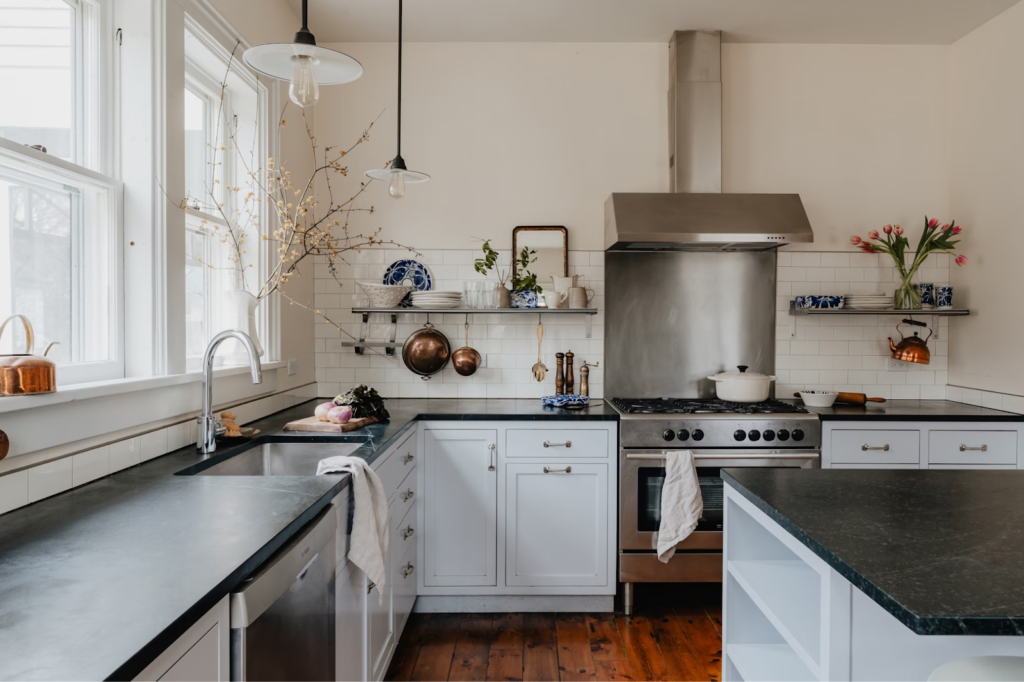In the realm of interior design, functionality reigns supreme. A home isn’t just a place to reside; it’s a sanctuary where every corner should serve a purpose. Achieving functional spaces within your home requires a delicate balance of aesthetics and practicality. From the bustling heart of the household, the kitchen, to the cozy corners of the living room, each space deserves thoughtful consideration and meticulous planning. Explore strategies and tips to help you create functional spaces that enhance both the beauty and efficiency of your home.
Understanding Functional Design
Before diving into specific areas of the home, it’s crucial to grasp the fundamentals of functional design. At its core, functional design prioritizes usability and practicality without sacrificing style. It involves optimizing the layout, flow, and organization of a space to maximize its potential. Whether you’re working with a compact apartment or a sprawling mansion, the principles of functional design remain constant.
The Heart of the Home: Kitchen Layouts
The kitchen serves as the heart of any home, where meals are prepared, conversations are shared, and memories are made. When designing a functional kitchen, the layout is paramount. There are several common kitchen layouts to consider, each offering its own set of advantages:
- Galley Kitchen: Ideal for small spaces, a galley kitchen features parallel counters and work areas along a central corridor. This layout maximizes efficiency by minimizing wasted space and promoting a streamlined workflow.
- L-Shaped Kitchen: With counters along two adjacent walls, an L-shaped kitchen offers ample storage and workspace. It provides flexibility for incorporating dining areas or islands, making it a versatile choice for various kitchen sizes.
- U-Shaped Kitchen: Characterized by three walls of cabinets and appliances, a U-shaped kitchen maximizes storage and counter space. This layout allows for efficient food preparation and encourages traffic flow around the perimeter, ideal for busy households.
- Open Plan Kitchen: In modern homes, open plan kitchens seamlessly integrate with adjoining living or dining areas, creating a sense of connectivity and spaciousness. This layout fosters social interaction while maintaining functionality and accessibility.
Regardless of the chosen layout, optimizing storage is essential for a functional kitchen. Utilize cabinets, drawers, and pantry space efficiently to keep countertops clutter-free and essentials within reach. Additionally, invest in high-quality appliances that align with your cooking habits and lifestyle, enhancing both functionality and aesthetics.
Innovative Kitchen Remodeling Ideas
When it comes to kitchen remodeling, creativity knows no bounds. Incorporating innovative ideas can transform a mundane kitchen into a culinary haven. Here are some inspiring kitchen remodeling ideas to elevate both form and function:
Smart Storage Solutions
Maximize every inch of space with clever storage solutions such as pull-out racks, vertical dividers, and corner carousels. Customized storage options optimize organization and minimize clutter, ensuring a tidy and efficient kitchen environment.
Multi-Functional Islands
A kitchen island isn’t just a countertop; it’s a versatile workstation that can serve multiple purposes. Incorporate built-in appliances, such as a cooktop or dishwasher, into the island to streamline food preparation and cleanup. Add seating to create a casual dining area or a cozy spot for morning coffee.
Task Lighting
Illuminate your kitchen with strategically placed task lighting to enhance visibility and functionality. Install under-cabinet lights to illuminate countertops, preventing shadows and facilitating food preparation. Pendant lights above the island or dining area add ambiance while serving a practical purpose.
Sustainable Materials
Embrace eco-friendly materials and design practices to create a kitchen that’s both functional and environmentally conscious. Opt for energy-efficient appliances, recycled countertops, and sustainable wood cabinetry to reduce your carbon footprint while enjoying a stylish and functional space.
Beyond the Kitchen: Crafting Functional Spaces Throughout the Home
While the kitchen holds a special place in the home, functional design principles extend to every room. Here are some tips for creating functional spaces throughout your home:
- Streamlined Storage Solutions: Incorporate ample storage options in every room to minimize clutter and maintain organization. From built-in closets and shelving units to hidden storage compartments, prioritize storage solutions that blend seamlessly with the overall design aesthetic.
- Flexible Furniture Arrangements: Choose furniture that’s not only stylish but also adaptable to different needs and occasions. Opt for modular pieces that can be easily reconfigured to accommodate gatherings, relaxation, or productivity. Investing in versatile furniture ensures that each space can fulfill its intended purpose without feeling cramped or cluttered.
- Strategic Layouts: Pay attention to the flow and layout of each room to optimize functionality and circulation. Arrange furniture to create defined zones for specific activities, such as lounging, dining, or working. Consider traffic patterns and sightlines to ensure a harmonious layout that promotes both comfort and usability.
- Incorporate Personal Touches: Infuse each space with elements that reflect your personality and lifestyle. Whether it’s a gallery wall of cherished photos, a cozy reading nook with plush cushions, or a collection of curated decor items, incorporating personal touches adds warmth and character to your home while enhancing its functionality.
Conclusion
Achieving functional spaces in the home is a continuous process of refinement and adaptation. By prioritizing usability, organization, and personalization, you can create a home that not only looks beautiful but also supports your daily activities and enhances your quality of life. From the efficient layouts of the kitchen to the inviting ambiance of the living room, every aspect of your home should work in harmony to create a sanctuary that nurtures and inspires. With thoughtful planning and creative solutions, you can craft a home that’s as functional as it is stylish, elevating your living experience to new heights.

